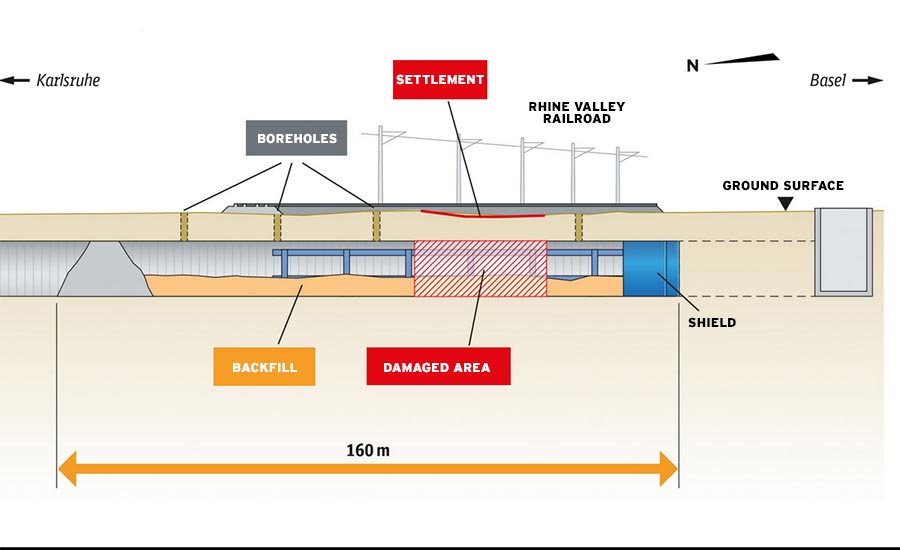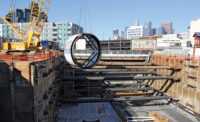German engineers are entombing a multimillion-dollar tunnel-boring machine in concrete to prevent the continuing collapse of a major railroad into the tunnel the TBM was driving.
A section of the international Rhine Valley Railroad started sinking in mid-August as the 10.9-meter-dia, 93-m-long bentonite TBM worked a few meters underground in soil that had been supposedly stabilized by freezing.
The 4.3-kilometer-long Ratsatt tunnel forms part of a new section of line between Karlsruhe, Germany, and Basel, Switzerland.
The ill-fated Hydroshield machine headed south on the twin tunnel's east bore, from a pit at Ötigheim, north of Rastatt, in May 2016. The TBM on the west tube followed that September. Both machines were located in soft terrain below groundwater level, according to their German maker, Schwanau-based Herrenknecht A.G.
After the settlement was reported on Aug. 12, the main contractor started filling about 150 m of the tunnel behind the TBM with concrete through boreholes.
A joint venture of Ed. Züblin A.G., Stuttgart, and Essen-based Hochtief Solutions A.G. is building the tunnel under a $370-million contract awarded by the state railroad infrastructure company DB Nezt A.G. in August 2014.
Alarming ground settlement occurred at Niederbühl toward the south end of the tunnel. At that point, there is only about 5 m of soil between the surface and the top of the TBM, according to DB Netz.
To stabilize this sensitive section, a subcontractor had frozen some 200 m of the tunnel route by this May. The second TBM was due to reach this location by November.
DB Netz immediately stopped rail traffic between Rastatt and Baden-Baden, causing major disruption to local, national and international traffic.
The line will remain closed until October while the tunnel is stabilized and the Rhine Valley Railroad track reinstated, according to DB Netz. "Tunnel safety and the safe operation on the Rhine valley are clearly in the foreground," said Dirk Rompf, chief executive officer at DB Netz.





